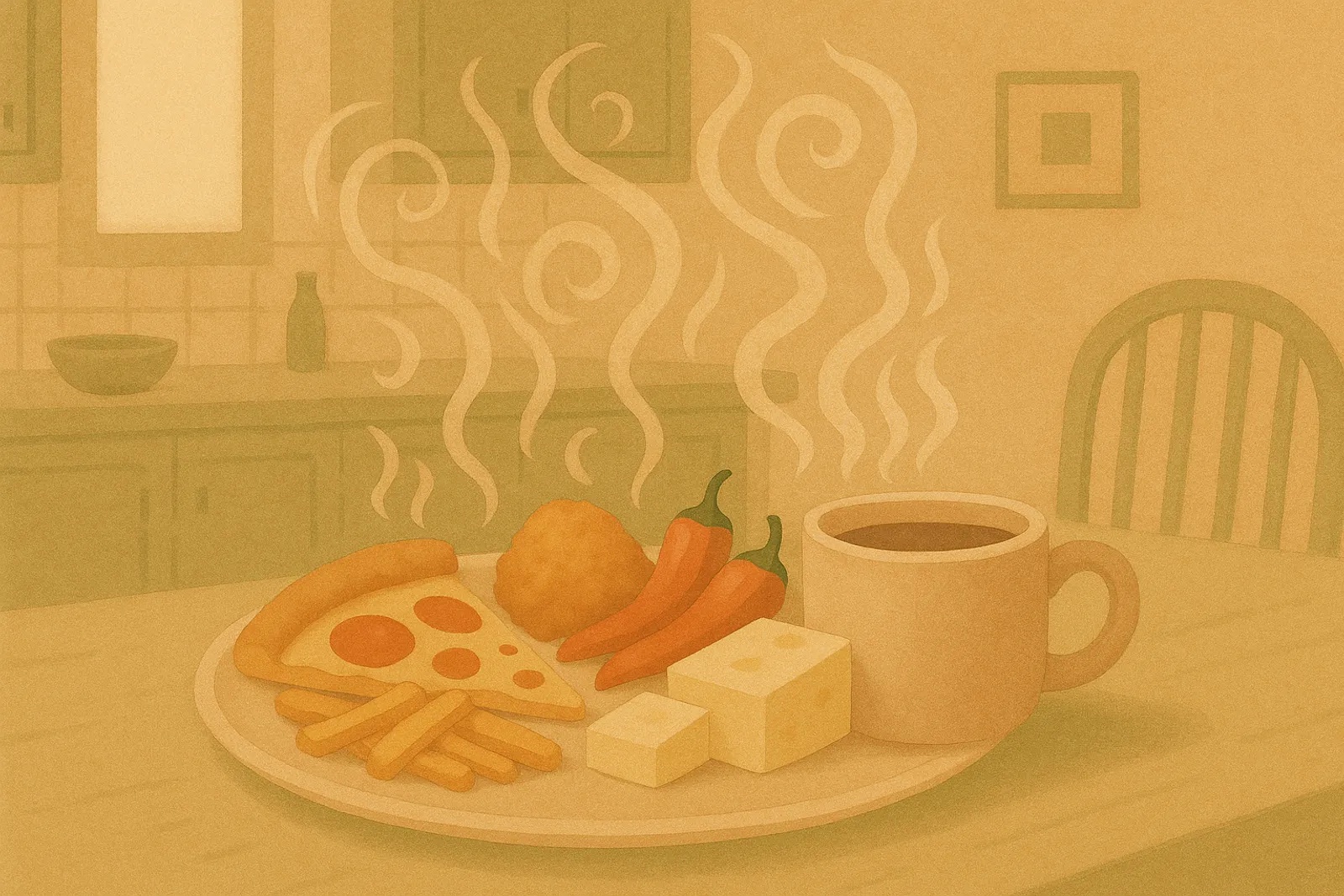CHS Trigger Foods: Complete Guide to Managing Cannabinoid Hyperemesis Syndrome Through Diet
Learn how to identify and manage CHS trigger foods, understand the science behind dietary impacts, and discover proven strategies for symptom relief. Expert guide with real patient experiences.

4 min read
If you’re dealing with Cannabinoid Hyperemesis Syndrome (CHS), you know just how tricky it can be to figure out which foods affect your symptoms. Don’t worry - we’ve got you covered with practical tips you can start using today.
Quick Guide
- Identify Triggers: Learn which foods might be affecting your symptoms
- Practical Tips: Get actionable strategies that actually work
- Scientific Insights: Understand the “why” behind food triggers
- Relief Methods: Discover research-backed approaches
- Management Plan: Create your personalized food strategy
Understanding CHS and Food Triggers
CHS can be overwhelming, with its cycles of nausea, vomiting, and abdominal pain. While cannabis is the primary trigger, certain foods can significantly impact your symptoms. Let’s explore what we know.
Foods That Often Trigger CHS
High-Fat Foods 🍟
- Fried foods
- Fatty meats
- Fast food items
- Oils and butter
Dairy Products 🥛
- Milk
- Cheese
- Ice cream
- Cream-based products
Spicy Foods 🌶️
- Hot sauces
- Chili peppers
- Spicy seasonings
Processed Foods 📦
- Packaged snacks
- Convenience meals
- High-sodium foods
Trigger Beverages ☕
- Alcohol
- Caffeine
- Energy drinks
TIP
Living with CHS can feel isolating, but your story could make a real difference. We’re building a community of support and understanding, and your experience matters.
What to Share:
- Your journey with CHS trigger foods
- Strategies that worked (or didn’t work) for you
- Tips for managing symptoms through diet
- Challenges you’ve overcome
Ready to help others? Use the comment section below or reach out through our contact form.
The Science Behind CHS and Food
Understanding how food affects CHS can help you make better choices:
- Fat Metabolism: High-fat foods slow digestion, potentially intensifying nausea
- Digestive Inflammation: Spicy and acidic foods may increase gut irritation
- Gut-Brain Connection: Your digestive system directly influences symptom severity
- Metabolic Impact: Heavy meals can overwhelm your system during episodes
Managing CHS Through Diet
The Food Detective Method 🔍
Track these key factors:
- What you eat and drink
- When you consume them
- Your symptom responses
- Potential trigger patterns
Creating Your Elimination Plan 📋
- Remove suspect foods
- Wait 2-3 weeks
- Reintroduce foods gradually
- Document reactions carefully
Professional Support 👨⚕️
Work with healthcare providers to:
- Develop your diet plan
- Monitor nutritional needs
- Adjust medications
- Track progress effectively
Safe Foods During Episodes
Gentle Proteins
- Grilled chicken (plain)
- Mild fish
- Plain tofu
Easy-to-Digest Carbs
- White rice
- Plain bread
- Basic crackers
Friendly Vegetables
- Steamed carrots
- Boiled potatoes
- Cooked squash
Long-Term Management Strategies
Daily Food Guidelines
- Eat small, frequent meals
- Stay well hydrated
- Keep meals simple
- Avoid known triggers
- Maintain regular timing
Practical Tips for Success
- Prepare meals in advance
- Keep safe snacks available
- Plan for travel
- Create backup meal options
Additional Resources
Support Networks
- CHS Awareness Foundation
- Gastrointestinal Health Resources
- Digestive Health Information
- CHS Community Support
Research References
- Sorensen, C. J., et al. (2017). “Cannabinoid Hyperemesis Syndrome: Diagnosis, Pathophysiology, and Treatment.” Journal of Medical Toxicology, 13(1), 71–87.
- Allen, J. H., et al. (2004). “Cannabinoid Hyperemesis: Cyclical Hyperemesis in Association with Chronic Cannabis Abuse.” Gut, 53(11), 1566–1570.
- Richards, J. R., et al. (2019). “Cannabinoid Hyperemesis Syndrome: Pathophysiology, Diagnosis, and Treatment.” The Journal of Emergency Medicine, 56(4), 420–428.
Join the Conversation
Have you found certain foods that help or hurt your CHS symptoms? Share your experiences in the comments below – your insights could help others on their journey.
Remember: While diet plays a crucial role in managing CHS, it’s just one part of the picture. Work with your healthcare team to develop a comprehensive management plan that works for you. Everyone’s experience is unique, and finding your balance takes time and patience. 💪
Did you find this article helpful? Help us keep creating free CHS resources.
❤️ Support CHS Awareness
